
Papillomas are called benign skin and mucous membranes. However, some strains can cause tissue degeneration. Therefore, experts recommend timely removal of papillomas. This will prevent the appearance of malignant tumors in women, including the development of cervical cancer.
Due to human papillomavirus (HPV) exposure, papillomatous lesions appear on the skin and mucous membranes that do not manifest themselves for a long time. Weakening of immunity, tissue damage, chronic transport cause cellular hyperplasia. HPV begins to multiply actively, which leads to the formation of papillomas or warts on the skin or genital warts (genital mucosa).
Predisposing factors
The following factors contribute to the active growth of papillomas:
- frequent change of sexual partners, infection with sexually transmitted diseases;
- home contact with people with warts, condyloma or papilloma;
- damage to the skin and mucous membranes;
- weakening of immunity.
HPV is inactive in 80% of adults. The virus does not cause the growth of neoplasms 6-8 months after contact with the virus carrier. The exceptions are genital warts and papillomas - they appear in the first weeks after close contact with an infected person.
Why remove papillomas
Papillomavirus is fraught with serious health hazards. Strains with high oncogenic risk are especially dangerous: 16, 18, 30, 31-35, 56-59, 67-68. When papillomatous tumors appear, it is necessary to consult a dermatologist or venereologist. The doctor will perform an external examination and determine the DNA of the virus and perform a PCR diagnosis, which will determine the degree of oncogenicity of a particular strain.
In addition, the specialist will select the most effective surgical methods. Only a doctor, holding the results of the examination, can tell exactly how to remove papillomas with minimal risk to health. It is not recommended to leave such neoplasms. Under the influence of adverse factors, it can become inflamed, bleed, and cause benign or malignant tissue hyperplasia.
It is important!It is important to remove papillomas in intimate places - the most oncogenic risk neoplasms appear here.
If papillomatous growths are found in the external genitalia (vulva, perineal area, foreskin), it is necessary to consult a venereologist. In addition, the goal is not only to determine the type of HPV, but also to undergo tests prescribed by a doctor to detect concomitant urogenital infections.

Surgical treatment of papillomas
The main methods of surgical treatment of papillomas:
- use of special local remedies that you can remove papillomas at home;
- cryodestruction (removal of papillomas with liquid nitrogen);
- laser coagulation (laser removal of papillomas);
- radiofrequency ablation of papillomas;
- removal of formations with a scalpel.
Any of these methods can eliminate papillomas. The specialist will help you choose the appropriate option, taking into account the location of the neoplasm, the number of papillomatous growths and diagnostic information. Before removing papillomas, the doctor must make sure that there is no malignant process. Specialists with a high oncogenic risk prefer the classic method of removing papillomas - scalpel removal of neoplasms.
The main indications for the removal of papillomas:
- the desire to get rid of a cosmetic defect in the form of single or multiple papillomatous growths on the skin and mucous membranes;
- Frequent damage to neoplasms in the armpits, neck, groin folds, bleeding and inflammation, which increases the risk of tissue malignancy;
- detection of medium and high oncogenic risk papillomas;
- being among relatives of people with malignant neoplasms;
- The localization of papillomas is the genitals and internal genitals.
This is an ideal time to remove papillomas
Before removing papillomas from the body and face, the doctor warns the patient about possible complications, including the formation of age spots. The risk of pigmentation is higher in spring and summer. Many people wonder if it is possible to remove papillomas in the spring. If the formations are located on exposed areas of the body or on the face, it is better to postpone cold surgery when the likelihood of secondary infection and pigmentation is lower (ultraviolet activity). autumn-winter period decreases).
It is important!Removal of the neoplasm alone is not enough - thus it will not be possible to stop the growth of the papillomavirus. Surgical methods must be combined with treatment methods.
It is impossible to get rid of HPV completely - a small amount of the virus will still remain in the body. However, in combination with antiviral drugs, surgical methods give the highest treatment results.
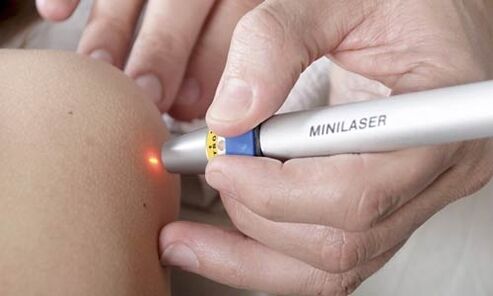
Laser removal of papillomas
Laser removal of papillomas is a modern method of surgical treatment of HPV. Specialists often use carbon dioxide laser systems. There are no scars or blemishes on the skin after the procedure. The high cost of laser removal of papillomas is consistent with the effectiveness of the method. The final cost depends on the size and number of lesions. At a time, the doctor can laser destroy 5-20 medium-sized formations. After examination and consultation, the specialist will tell you how much it costs to remove papillomas and give detailed recommendations. In addition, antiviral treatment is mandatory. Medications are also selected by the attending physician.
With the help of a laser, papillomas can be removed from all parts of the body, including the genitals. This method is bloodless and non-contact. The laser has an anti-inflammatory effect on tissues, closes blood vessels and prevents bleeding. Papillomas often appear in the form of filamentous growths on the hands (warts) and neck - easily damaged during hygiene procedures. Such neoplasms do not have a high oncogenic risk, but it is better to get rid of them.
Features of laser removal of papillomas
A dermatologist is consulted before the procedure. The doctor examines the skin, identifies possible contraindications:
- tissue damage;
- local inflammation of the skin and mucous membranes;
- pregnancy;
- exacerbation of any infectious process;
- herpes
Laser removal of papillomas uses semiconductor lasers that evaporate viral neoplasms and at the same time clot blood vessels. After the destruction of papillomametic growth, a protective crust is formed on the skin. One week after removal, it gives up on its own. After 2 months of the procedure, the skin tone is completely equal. The location of the papillomas will be no different from the adjacent tissues.
Skin care
The scab formed after laser removal of the papilloma should be protected from sunlight, water and cosmetics. It is forbidden to try to peel the skin by force - it can lead to wound infection, rough scars and increase the healing time of tissues.
After peeling, it is recommended to lubricate the skin with sunscreen before going out. This will prevent the formation of age spots. It is not necessary to wear sunscreen in winter.
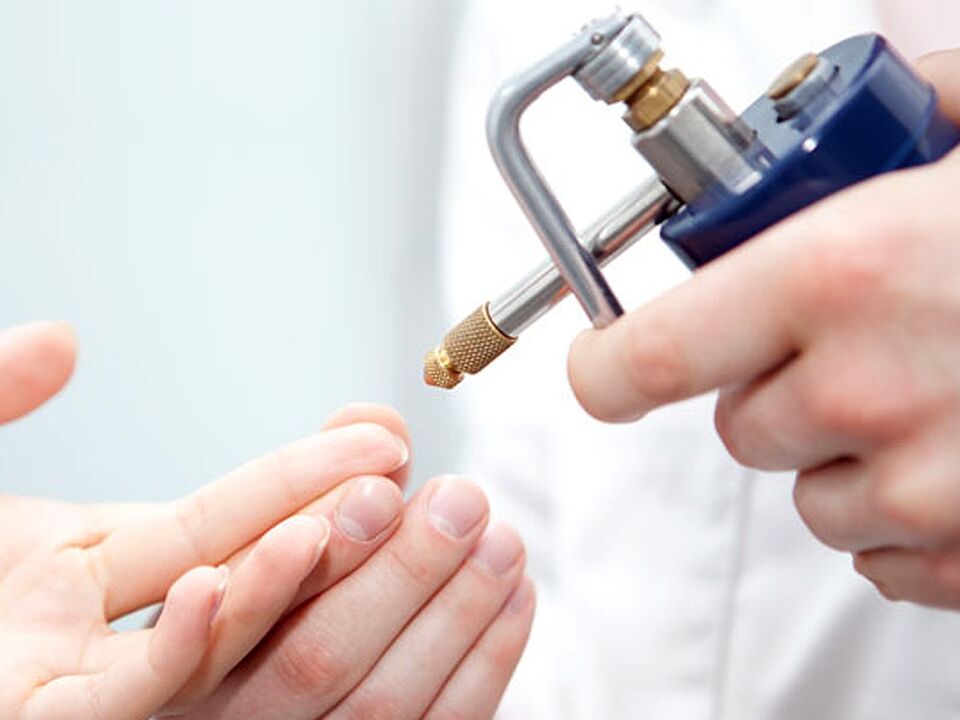
Removal of nitrogenous papillomas
Removal of nitrogenous papillomas consists of frozen neoplasms (cryodestruction). The method is effective for single papillomatous protrusions on the skin. A significant disadvantage of cryodestruction is the inability of tissues to control the depth of freezing. For this reason, it is very important to take a responsible approach to choosing a clinic where papillomas need to be removed. You must have a doctor's permission to perform surgery.
Ultra-low temperature causes the death of the neoplasm by stopping metabolic processes in the cells. A necrotic area is formed at the site of the removed papilloma, which is gradually replaced by healthy tissue. Cryodestruction is present in the majority of patients. The procedure is much cheaper than other methods (laser coagulation, radiofrequency ablation of neoplasms).
Papillomas can be removed both for aesthetic reasons and with special instructions. Of particular concern are neoplasms, which increase sharply in size, change their shade and shape, become inflamed and injured during hygienic procedures.
Features of cryodestruction
Before removing papillomas with liquid nitrogen, the doctor carefully examines the skin, assesses the general state of health and identifies possible contraindications:
- acute infectious processes;
- decompensated stage of somatic diseases;
- exacerbation of skin diseases;
- herpes;
- tissue damage in the area where the neoplasm is located;
- pregnancy period.
Nitrogen papillomas are removed without anesthesia. The cryodestructor applicator is kept on the neoplasm for 1-2 minutes. The skin turns white and cold, temporarily loses its sensitivity. There is a slight tingling sensation during the procedure, a burning sensation may appear. A few hours after the procedure, the skin swells and turns red, and 24 hours after cryodestruction, vesicular elements appear in the treated area, containing serous fluid.
Tissue cryonecrosis lasts up to a month, after which the dead areas of the neoplasm are rejected, and in their place appear invisible spots that will disappear completely after 3-5 months of liquid nitrogen.
Skin care
In the first weeks after removal of papillomas by cryodestruction, it is recommended to protect the skin from moisture, sunlight and other adverse factors. If severe inflammation occurs, you should consult your doctor. Tissues usually heal on their own, but with low levels of epithelialization, your doctor may recommend cosmetics that accelerate the regeneration of damaged skin.
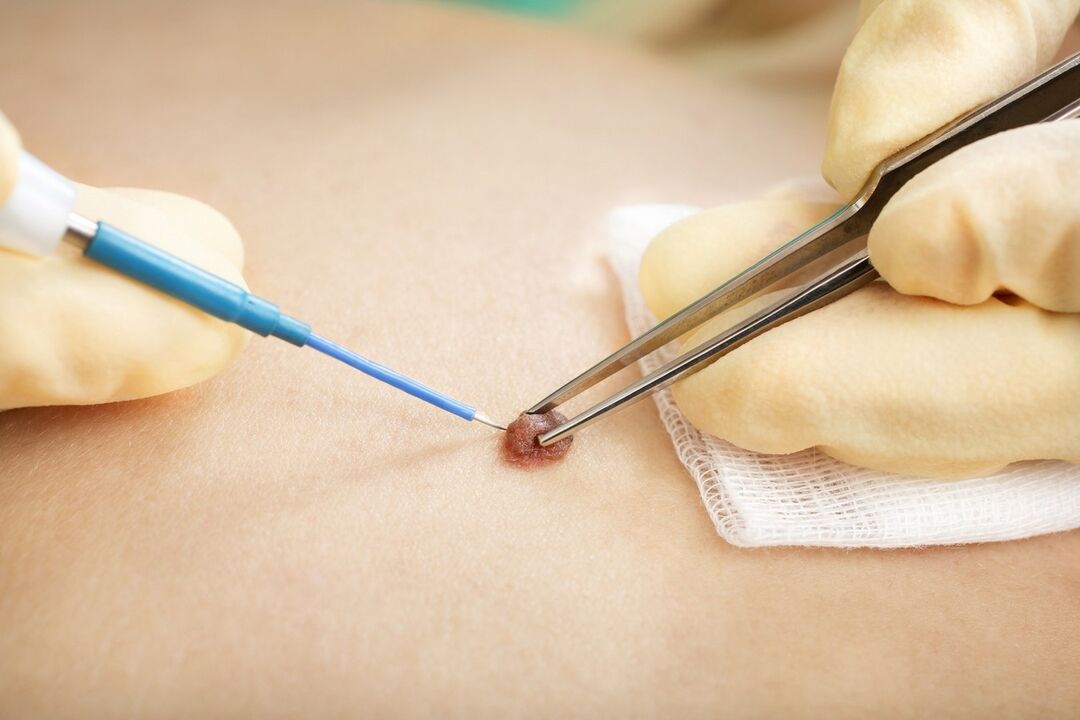
Removal of papillomas by electrocoagulation
Electrocoagulation of papillomas involves the removal of growths on the skin by electric current. The method is quite traumatic, but at an affordable price. High-frequency current coagulates the proteins of the neoplasm, causing tissue rejection.
Features of the procedure
Prior to electrocoagulation, a specialist may order dermatoscopy, PCR, and other laboratory diagnostic methods. The doctor examines the possible contraindications and prescribes:
- exacerbation of herpes infection and any inflammatory process;
- pregnancy;
- suspicion that papillomas are malignant;
- hypersensitivity of the skin, allergic reaction to electricity;
- exacerbation of severe somatic diseases, especially those in the stage of decompensation.
Skin care
Electrocoagulation of papillomas does not require complex skin care. It is important to avoid the effects of predisposing factors that can cause inflammation and a secondary infection. Itching in the first weeks is rejected, after which the skin is completely cleansed and replaced with new cells. Avoid direct sunlight during this period. Your doctor may recommend treating the wound with a weak solution of potassium permanganate.
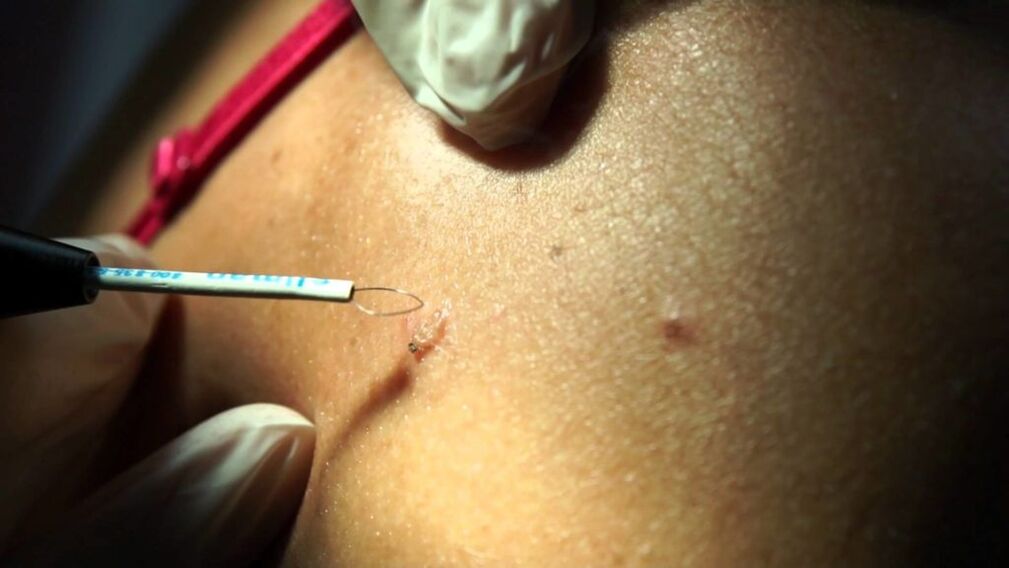
Radiofrequency ablation of papillomas
Radiofrequency ablation of papillomas is accompanied by atraumatic incision and coagulation of neoplasmic tissues. Radio waves do not damage healthy tissue and act with high accuracy by preventing the spread of HPV throughout the bloodstream. Radiosurgery devices used in modern clinics are safe and allow to minimize the risk of any complications.
Features of the procedure
The initial diagnosis allows you to determine the amount of virus in the body, the type of HPV and the degree of oncogenic risk. When choosing a treatment, the doctor takes into account the general state of health and prescribes possible contraindications:
- pregnancy, menstruation;
- exacerbation of any infectious and inflammatory process and somatic diseases;
- presence of malignant tumors;
- exacerbation of herpes infection;
- damage to the skin at the site of exposure to radio waves.
High-frequency energy cuts the skin, clots blood vessels and papilloma tissue. In this case, the electrode has no direct contact with the tissues, which prevents painful sensations and muscle spasms. Unlike the electrocoagulation method, the use of radio waves can reduce the duration of thermal exposure and reduce the necrosis of the treated areas.
Skin care
The procedure is performed under local anesthesia. Removal of papillomas takes only 15-30 minutes. In place of the treated tissue areas, there are self-rejecting dot scales within a week without leaving any rough wounds or other defects. It is recommended to limit contact with water and ultraviolet rays during the recovery period, you should not use cosmetics and household chemicals.
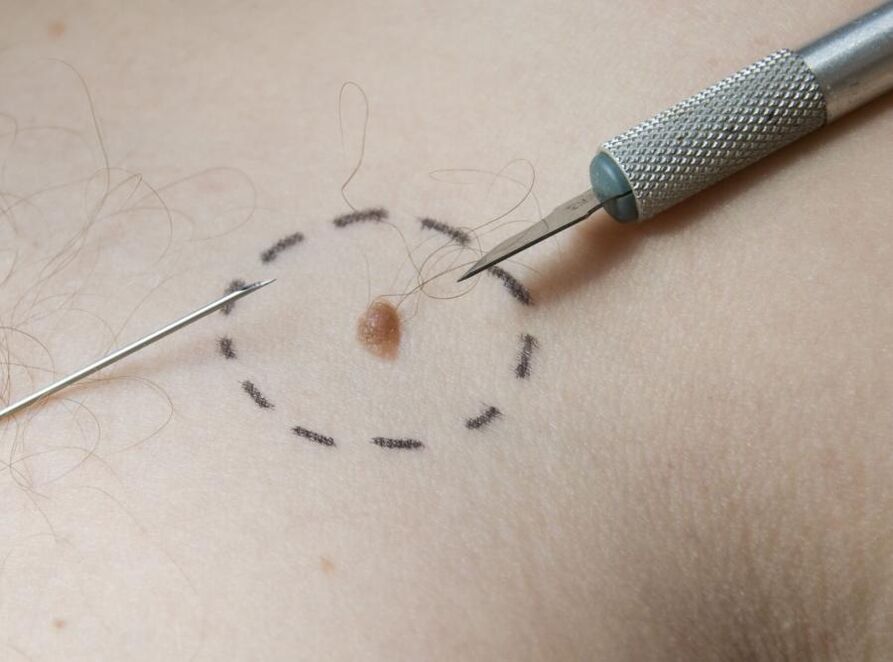
Surgical operation with a scalpel
Scalpel removal of papillomas during a classic operation is rarely used, especially when malignant signs of neoplasm are detected. In this case, the surgeon removes the papillomatous growths by capturing healthy skin.
The method is traumatic, leaves scars and blemishes. If desired, they can be removed using other cosmetic procedures, including laser and acid peels. Experts try not to use surgical excision of papillomas on exposed areas of the body and face.
Means for removing papillomas
Medications to remove papillomas and warts work in the same way: they contain substances that cause the destruction of neoplastic cells with the formation of a small itch in the future. It is recommended to use modern drugs with a lower risk of complications in the form of secondary infection, acute inflammatory reaction, spots and scars. It is also possible to use cryo preparations that can replace standard cryodestruction.
Removal of papillomas at home is very dangerous, especially with large neoplasms. In the future, it is better to contact specialists who will choose the optimal treatment options, including antiviral therapy to prevent the recurrence of human papillomavirus infection. A specialist will tell you how to remove papillomas at home and whether it is worth doing. Preparations for topical application to skin growth are used for single small neoplasms.
Since it is not always possible to remove papillomas only with the help of pharmacy products, it is still advisable to consult a dermatologist. For small neoplasms, your doctor may prescribe proven medications that will destroy papillomatous growths. In addition, the use of antiviral agents is recommended. A unified approach increases the effectiveness of the entire treatment process. Antiviral agents can be released only when the papillomas are solitary and not prone to proliferation and malignancy.
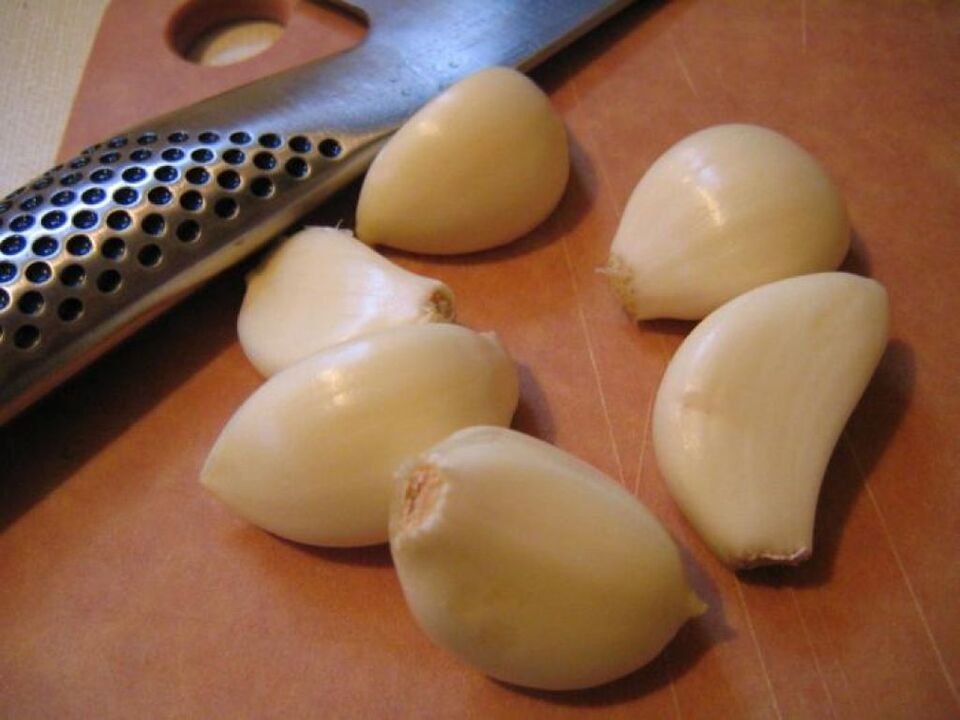
Removal of papillomas by folk methods
Removal of papillomas with folk remedies at home is popular. The public does not take the papillomavirus seriously enough. Not many people know that papillomas can be malignant. It is advisable to consult a dermatologist first, as it is almost impossible to remove papillomas at home without health risks. Using modern diagnostic methods, the doctor will be able to assess the nature of the neoplasm and choose an effective treatment regimen.
General methods of removing papillomas at home
You can remove papillomas at home using the following tools:
- celandine juice;
- garlic;
- green walnut juice;
- salicylic acid.
It is important!These methods destroy the growths on the skin. Due to the high risk of acute inflammatory reactions and chemical burns, the use of such products on the mucous membranes is strictly prohibited.
Strawberry juice is most commonly used to remove papillomas. Affected areas of the skin are treated with this tool several times a day. In this case, celandine should not be applied to healthy tissues. To prevent burns, it is recommended to treat unaffected skin with vegetable oil or zinc ointment before using the water.
Garlic has a disinfectant effect, helps to remove warts and papillomas with long-term use. However, this method is not suitable for people with sensitive skin. Garlic often causes inflammatory reactions, burning and redness.
Salicylic acid helps to destroy skin growths caused by the active multiplication of papillomavirus. This remedy often includes ready-made drugs to get rid of papillomas and warts. Salicylic acid is applied several times a day until the neoplasm is completely gone.
Green walnut juice strongly stains the skin. The tool should be used for a long time to ensure that the papilloma dries. The processed fabrics get a dark brown color, the skin can be peeled and dry.














































































